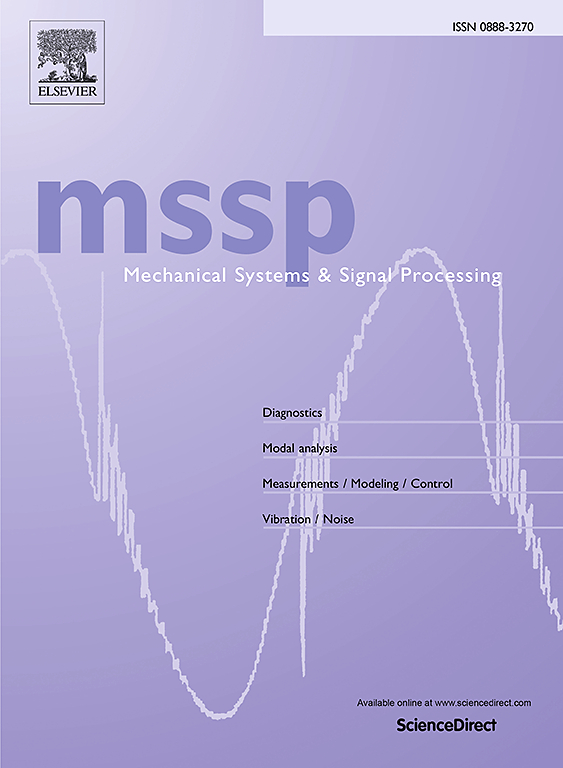自适应学习策略的代理辅助贝叶斯校准
IF 8.9
1区 工程技术
Q1 ENGINEERING, MECHANICAL
引用次数: 0
摘要
工程系统的贝叶斯推理或校准需要从系统模型参数的后验分布中采样。对于具有复杂数值模型的应用程序,这种采样的计算负担(需要对该模型进行大量调用)可能令人望而却步。为了减轻这一负担,本工作研究了一种自适应代理模型实现,用于在贝叶斯推理过程中近似数值模型预测。采用高斯过程(GP)回归作为代理建模技术,而公式嵌入在顺序蒙特卡罗(MC)方法中,使用一系列中间辅助密度从后验目标密度中有效地提取样本。通过迭代增加训练点来建立GP的自适应训练,以通知目标后验密度逼近。在每次迭代中,使用当前的训练点集构建GP模型来近似系统响应,从而得到后验分布。然后使用这个近似来方便从后验抽样。当由连续迭代得到的后验密度近似具有足够的相似性时,迭代过程终止。收敛性是用一系列标准来评估的,包括最可能参数估计的稳定性和近似后验密度的相似性。如果不能建立收敛性,则通过使用加权积分均方误差作为获取函数的计算机实验自适应设计(DoE)来改进代理模型。通过适当选择权值,促进开发和勘探策略,分别提高GP逼近的效率和鲁棒性。这种权重选择结合了目标后验密度和中间辅助密度的信息。研究了在更新代理模型后提高DoE优化和顺序蒙特卡罗采样的计算效率的策略。考虑了静态和动态贝叶斯校准问题,考察了三个说明性的例子。结果证明了自适应GP公式提供的计算效率,并为最佳适应策略和在GP实施中作为输出采用的响应量的适当选择提供了见解。本文章由计算机程序翻译,如有差异,请以英文原文为准。
Surrogate-aided Bayesian calibration with adaptive learning strategies
Bayesian inference or calibration for engineering systems requires sampling from the posterior distribution of the system model parameters. For applications with complex numerical models, the computational burden for this sampling, requiring a large number of calls to that model, can be prohibitive. For alleviating this burden, this work investigates an adaptive surrogate model implementation for approximating the numerical model predictions within the process of the Bayesian inference. Gaussian Process (GP) regression is adopted as surrogate modelling technique, while the formulation is embedded within a sequential Monte Carlo (MC) approach, using a series of intermediate auxiliary densities to efficiently derive samples from the posterior target density. The adaptive training of the GP is established by iteratively adding training points to inform the target posterior density approximation. At each iteration, a GP model is constructed using the current set of training points to approximate the system response and, consequently, the posterior distribution. This approximation is then used to facilitate sampling from the posterior. The iterative procedure terminates once the posterior density approximations from successive iterations exhibit sufficient similarity. Convergence is assessed using a combination of criteria, including the stability of the most probable parameter estimates and the similarity of the approximated posterior densities. If convergence is not established, the surrogate model is refined through an adaptive design of computer experiments (DoE) that uses the weighted integrated mean squared error as acquisition function. Through proper selection of the weights, exploitation and exploration strategies are promoted to improve, respectively, efficiency and robustness for the GP approximation. This weight selection combines information from both the target posterior density and the intermediate, auxiliary densities. Strategies are examined for improving computational efficiency for the DoE optimization and for the sequential Monte Carlo sampling once the surrogate model has been updated. Three illustrative examples are examined, considering both static and dynamic Bayesian calibration problems. Results demonstrate the computational efficiency offered through the adaptive GP formulation and provide insights for the best adaptation strategies and for the appropriate selection of response quantities to be adopted as outputs within the GP implementation.
求助全文
通过发布文献求助,成功后即可免费获取论文全文。
去求助
来源期刊

Mechanical Systems and Signal Processing
工程技术-工程:机械
CiteScore
14.80
自引率
13.10%
发文量
1183
审稿时长
5.4 months
期刊介绍:
Journal Name: Mechanical Systems and Signal Processing (MSSP)
Interdisciplinary Focus:
Mechanical, Aerospace, and Civil Engineering
Purpose:Reporting scientific advancements of the highest quality
Arising from new techniques in sensing, instrumentation, signal processing, modelling, and control of dynamic systems
 求助内容:
求助内容: 应助结果提醒方式:
应助结果提醒方式:


